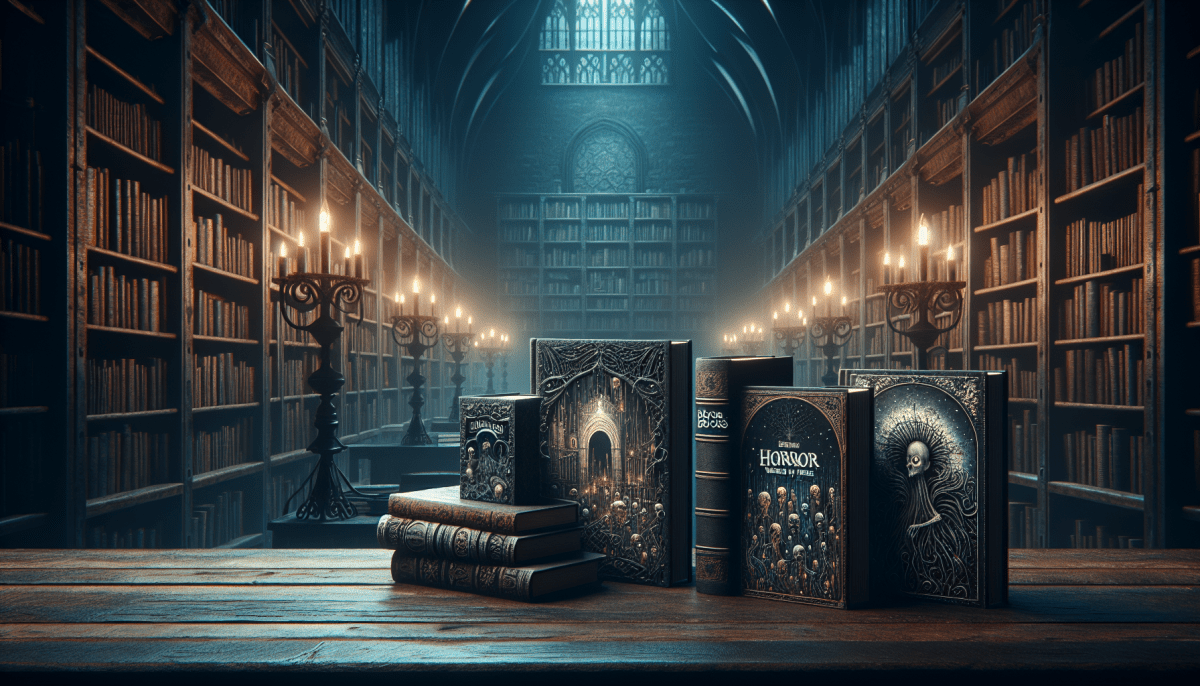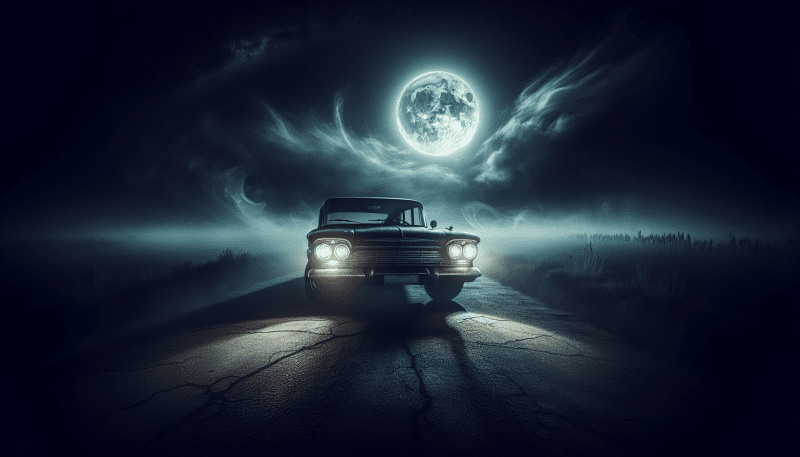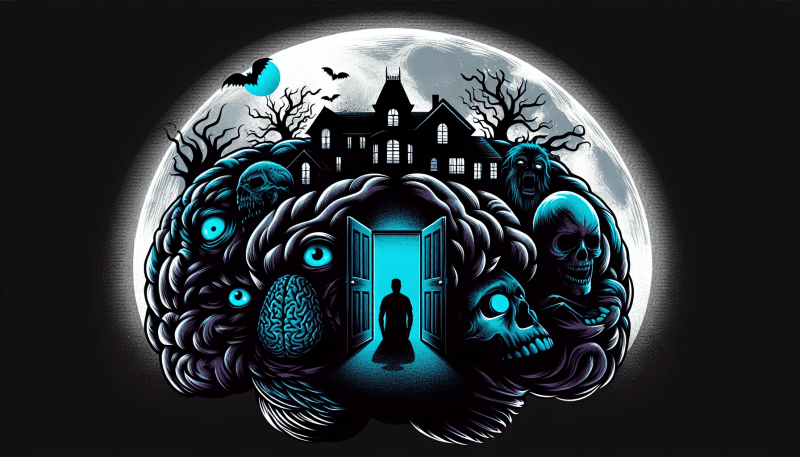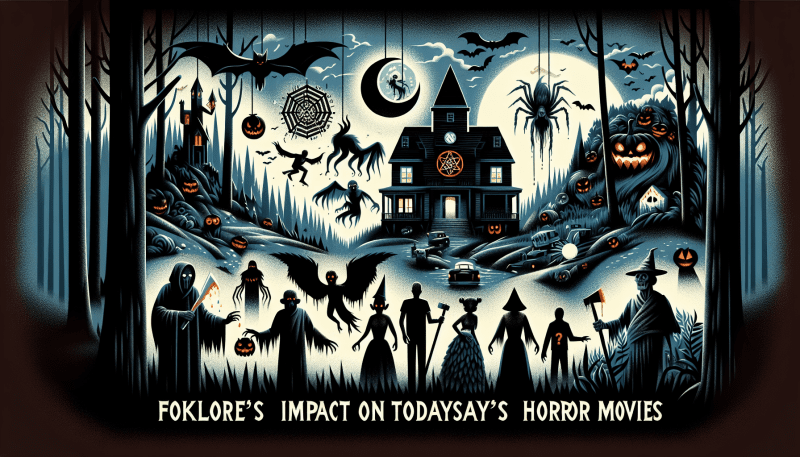Horror books by female authors: Chilling reads you shouldn’t miss
Horror books by female authors offer new twists on classic scares and unique stories that stick with readers. **Many of these writers bring fresh ideas and perspectives to the genre, making their books a must-read for anyone who loves to be spooked.** Female authors like Shirley Jackson, Mary Shelley, and Tananarive Due have written some of the most memorable horror stories out there.
From chilling haunted houses to dark legends and unsettling mysteries, these books cover a wide range of horror themes. Whether someone likes slow-building suspense or fast-paced terror, there’s something for every type of reader. Exploring horror written by women can open the door to new voices and experiences.
Defining Horror Books by Female Authors
Female authors have helped shape horror by adding new viewpoints and unique storytelling styles. They often bring fresh perspectives to classic horror themes, using their own life experiences and backgrounds.
Historical Overview
Women have been writing horror for a long time, even before it was called horror. *Mary Shelley* is often credited with starting science fiction horror with “Frankenstein” in 1818. During the 19th and 20th centuries, authors like *Charlotte Perkins Gilman* (“The Yellow Wallpaper”) used horror to discuss important topics like mental health.
As time passed, female horror writers gained more recognition. Authors such as *Shirley Jackson* created classics like “The Haunting of Hill House,” showing that women could write deeply unsettling stories. Recent names like *Tananarive Due*, *Carmen Maria Machado*, and *Mira Grant* continue to build the genre today.
A quick timeline of a few important works:
Year Author Book Title
1818 Mary Shelley Frankenstein
1892 Charlotte P. Gilman The Yellow Wallpaper
1959 Shirley Jackson The Haunting of Hill House
2017 Carmen Maria Machado Her Body and Other Parties
Key Themes and Motifs
Female horror authors often focus on everyday fears and personal struggles. Many stories look at family, power, and identity. It is common to see horror books by female authors using haunted houses, isolation, and the body as main themes.
Some writers use horror to discuss big ideas like gender, trauma, or societal roles. For example:
- Charlotte Perkins Gilman** explored oppression in “The Yellow Wallpaper”.
- Shirley Jackson** wrote about isolation and the unknown.
- Carmen Maria Machado** focuses on relationships, memory, and abuse.
These themes help set horror books by female authors apart from other kinds of horror. They often use horror to highlight real-world problems, making their stories both frightening and thought-provoking.
Pioneering Female Voices in Horror
Women have played a huge role in shaping horror fiction, often bringing new ideas and perspectives to the genre. Their stories have challenged the status quo and left a clear mark on horror throughout history.
Early Female Horror Writers
Mary Shelley** is often seen as the first big name among female horror authors. Her novel *Frankenstein* (1818) changed what people thought horror could be. Shelley used science and emotion in her story, making readers both scared and thoughtful.
Ann Radcliffe** wrote earlier Gothic novels such as *The Mysteries of Udolpho* (1794). These books were popular in their time and laid the groundwork for spooky mansions and hidden secrets being central in horror stories.
Women like **Charlotte Perkins Gilman**, who wrote *The Yellow Wallpaper* in 1892, also pushed boundaries. Gilman’s short story explored mental illness and the fear trapped within ordinary places. This mix of realism and terror helped shape psychological horror.
Other early authors include **Amelia B. Edwards** and **Elizabeth Gaskell**, who both wrote chilling short stories. These women set the stage for modern horror by weaving real fears into fictional tales.
Notable Works and Their Impact
Some horror books by female authors have changed the entire genre. *Frankenstein* by Mary Shelley is still studied today. It explores life, death, and what it means to be human, making it a classic for over 200 years.
*The Yellow Wallpaper* by Charlotte Perkins Gilman highlights how horror can address social issues, especially women’s mental health. The story is often used in schools to show how horror can also be meaningful literature.
Other notable books include *Rebecca* by Daphne du Maurier and *We Have Always Lived in the Castle* by Shirley Jackson. Both stories use houses and families to create a sense of dread. These books influenced later writers and brought more emotional depth to horror fiction.
Here’s a quick look at some important titles:
Author Notable Work Year
Mary Shelley Frankenstein 1818
Charlotte Perkins Gilman The Yellow Wallpaper 1892
Daphne du Maurier Rebecca 1938
Shirley Jackson We Have Always Lived in the Castle 1962
Modern Masters: Contemporary Female Horror Authors
New voices and established names are shaping horror fiction today. Readers can find bestselling favourites alongside breakout writers changing the landscape of the genre.
Bestselling Titles
Several women have become leading figures in horror. **Shirley Jackson** is considered a classic author, but more recent writers like **Sarah Lotz** and **Catriona Ward** are now household names.
*The Last House on Needless Street* by Catriona Ward is praised for its psychological twists. **Tananarive Due**’s books add social themes, with *The Good House* often highlighted.
**Mira Grant** (real name Seanan McGuire) is known for her bestselling *Feed* series, mixing horror with science fiction. **Rachel Harrison** found wide readership with *The Return* and *Such Sharp Teeth*.
Here's a short list of popular horror books by female authors now:
- The Only Good Indians* by Stephen Graham Jones (Note: Jones is male, but often mentioned with current female-led horror trends)
- The Grip of It* by Jac Jemc
- Mexican Gothic* by Silvia Moreno-Garcia
Emerging Talents in the Genre
Many newer authors are gaining attention. **Hailey Piper** is known for her unique, queer horror. Her book *The Worm and His Kings* drew critical praise for its fresh style. **V. Castro** stands out for horror with Mexican and feminist influences, writing *Queen of the Cicadas*.
Smaller presses have launched voices like **Gwendolyn Kiste** and **Ally Wilkes**. Kiste’s *The Rust Maidens* was nominated for the Bram Stoker Award. Wilkes’s *All the White Spaces* explores fear in remote settings.
These emerging authors are diversifying the topics in horror fiction. Their stories often combine horror with issues like gender, identity, and culture, making the genre richer and more varied.
Subgenres Explored by Women in Horror
Women authors bring a wide range of horror subgenres to life in their books. They explore dark settings, complex minds, and even the power or terror of the human body.
Gothic and Supernatural Horror
Female authors have played a key role in Gothic and supernatural horror. Early works like *Frankenstein* by Mary Shelley blend science with fear, creating stories about both monsters and the people who make them. Shirley Jackson’s *The Haunting of Hill House* uses a haunted manor to look at loneliness and fear.
Modern authors such as Susan Hill (*The Woman in Black*) carry on these traditions. Their stories focus on eerie settings, ghosts, and the unknown. Common features include:
- Isolated mansions or castles
- Ghosts, spirits, or cursed objects
- Dark secrets from the past
These elements help build an unsettling mood that keeps readers curious and tense.
Psychological Horror
Psychological horror by women often focuses on characters' minds. Shirley Jackson and Daphne du Maurier both wrote stories where the main threat is not a monster but someone’s doubt or guilt. In *We Have Always Lived in the Castle*, paranoia and suspicion drive the action forward.
Contemporary writers like Gillian Flynn, with *Sharp Objects*, bring horror into everyday life. They show how trauma, manipulation, and obsession can destroy people. These books often use unreliable narrators and focus on:
- Mental illness or instability
- Identity and trust issues
- Hidden motives or dark family secrets
Female authors make readers question what is real and who can be trusted.
Body Horror and Splatterpunk
Body horror explores physical transformation, decay, or injury. Female authors have taken bold steps in this subgenre, using it to comment on topics like control, pain, and gender. Mira Grant (Seanan McGuire) explores infection and transformation in her *Newsflesh* series.
Splatterpunk, with its focus on gore and shock, is less common but still present. Authors like Kristine Kathryn Rusch have written intense, graphic tales that push limits. Key themes in these books often include:
- The fragility of the human body
- Loss of bodily autonomy
- Breaking taboos about pain or violence
These stories use physical horror to highlight deeper fears about vulnerability and being changed against one’s will.
Why Read Horror Books by Female Authors?
Horror books by female authors often blend suspense, emotion, and social themes in ways that stand out from other horror stories. These writers deliver fresh storylines and voices while also bringing attention to important topics.
Unique Narratives and Perspectives
Female authors create horror stories that sometimes focus on personal fear, family ties, and daily struggles. They blend the psychological with the supernatural, making the chilling scenes feel very real. For example, books like *The Haunting of Hill House* by Shirley Jackson use home and relationships as sources of fear.
The characters in these stories often face different threats than those in horror books by male authors. Women writers tend to dig into themes like isolation, survival, and power in subtle yet strong ways. Some stories might highlight how women confront or escape danger in settings that others might overlook.
Their unique voices can give readers a new way to see familiar horror themes. These stories can be unpredictable, eerie, and relatable, showing the reader that horror does not always rely on shock — sometimes it comes from what’s left unsaid.
Cultural Influence and Representation
Female horror authors have expanded the genre by including stories from different backgrounds, cultures, and experiences. This means more people see themselves and their fears in the books they read. For example, Silvia Moreno-Garcia blends Mexican folklore and gothic horror in *Mexican Gothic*.
Their stories do not only scare, but also make readers think about real-world issues. Racial and gender bias, family roles, and cultural pressures come up in the pages. These books ask questions about what people fear and why.
By offering different angles on horror, books by female authors help break stereotypes and introduce important conversations. Readers get a wider view of society, all wrapped up in the fun and fright of a gripping horror story.



